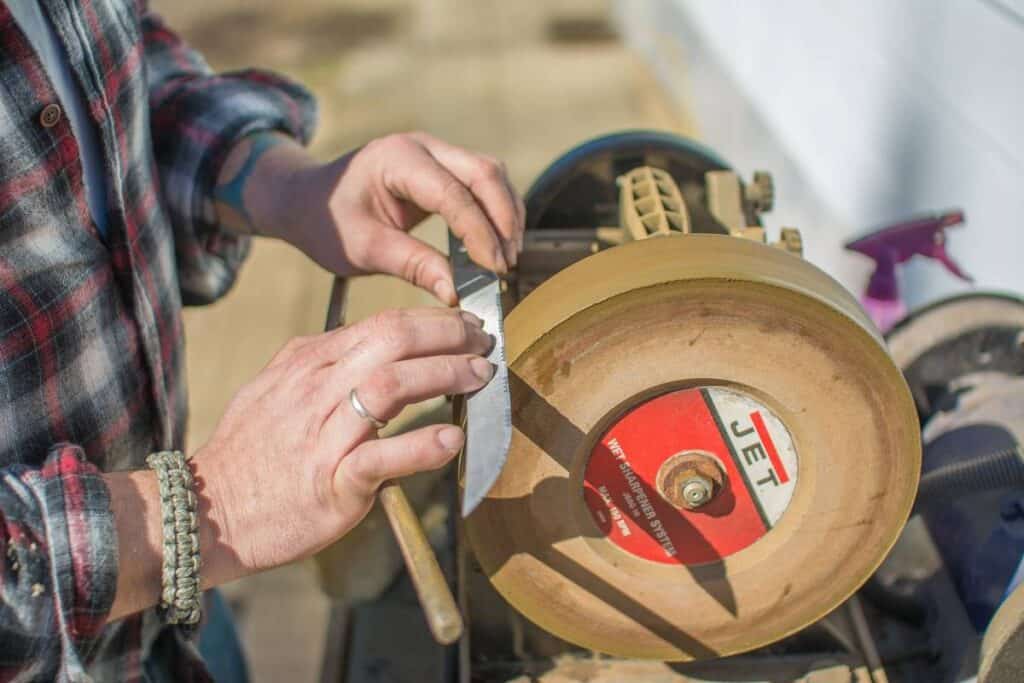[ad_1]
When it comes to knives and knife maintenance, keeping your knife sharp is probably the most important part. There are many ways to do this, electric and pull through sharpeners are probably the easiest systems to use.
On the other hand, if you want to go for something more traditional; then using a sharpening stone would be the way to go. With all that said, we come to a question that is asked often:
Can knife sharpening wear down the blade? Yes it will, slowly and over time. Sharpening involves removing a layer of steel from the blade. If you do it right and sharpen only when needed, it won’t wear down too much. But, if the blade is sharpened incorrectly or too often, you’ll remove too much material, wearing it down quicker.

The Sharpening Process and Overgrinding
Let’s look at the sharpening process for a moment before we continue. When you sharpen a knife, you are removing a layer of steel along the edge of the knife. This allows you to re-establish an edge on your blade, but it also wears it down a little bit. If you take too much steel off the blade (you overgrind the blade), then there won’t be enough material left to make a new edge.
Now, depending on the severity of the overgrinding, you can fix an overground blade by having it re-profiled – having a new blade made from the existing material. Re-profiling would have to be done by the manufacturer.
When do you Sharpen a Knife?
The obvious answer is: “when it’s dull”, but how do you determine if a blade is dull? Well, you could run your finger over the edge but if the knife were sharp or, at least, sharp enough to cut; you’d hurt yourself. You may be able to determine visually that your knife is dull, but your eyes can’t see every little flaw in the blade.
Quick Recap
So, before I close out the article let’s do a quick recap, shall we?
- The sharpening process involves removing a layer of steel from the edge, this does wear down your blade.
- Use a honing steel first and then do a test cut, if the blade still struggles or doesn’t cut the way it should, it’s dull and you need to sharpen it.
- Sharpening only when needed ensures that you don’t wear down the blade too much.
- Removing too much material during sharpening will result in the blade having to be re-profiled as there’s not enough of the original blade to put a new edge in place.
Sharpening a knife can be a daunting prospect the first few times while you’re learning how to do it properly. You’ll worry about damaging the blade, you wonder if the edge is right or not. Once you’ve got it right, however, you’ll find it to be a breeze.
Of course, you could just go the easy route and buy a new knife when the old one goes dull. Although, considering the prices on knives, your bank account might hate you for it, so it’s probably better to just learn to sharpen a knife properly.
As always, I hope you found this article informative and enjoyable. Thanks for reading and I’ll see you next time. May your knives always have a razor’s edge!
[ad_2]
Source link
Get more stuff like this
in your inbox
Don't Be Left Unprepared
Thank you for subscribing.
Something went wrong.





